School History: Burke Elementary School
Remembering Our Past
The following history of Burke Elementary School was adapted from a history written for the school’s 40th anniversary by Principal Marjorie Singleton.
Burke Elementary School opened its doors to students for the first time on January 8, 1940. The school was built, beginning in April 1939, by the Northern Virginia Construction Company. Construction of the school was partially funded by a grant from the federal government’s Public Works Administration (PWA). The school’s first teachers were Mary Ella Carr, Myrtle Estes, and Nora Estes Messick. In addition to her teaching duties, Mrs. Messick was also the principal. Her annual salary in 1940 was $1,000.

Burke Elementary School was built on four acres of land purchased from William J. Simpson, who lived nearby in the old Silas Burke house. The school building fronted on Lee Chapel Road. As you entered the school, a small room on the left was the principal’s office and a small room on the right was the library. The building was centrally heated by a coal furnace with radiators.
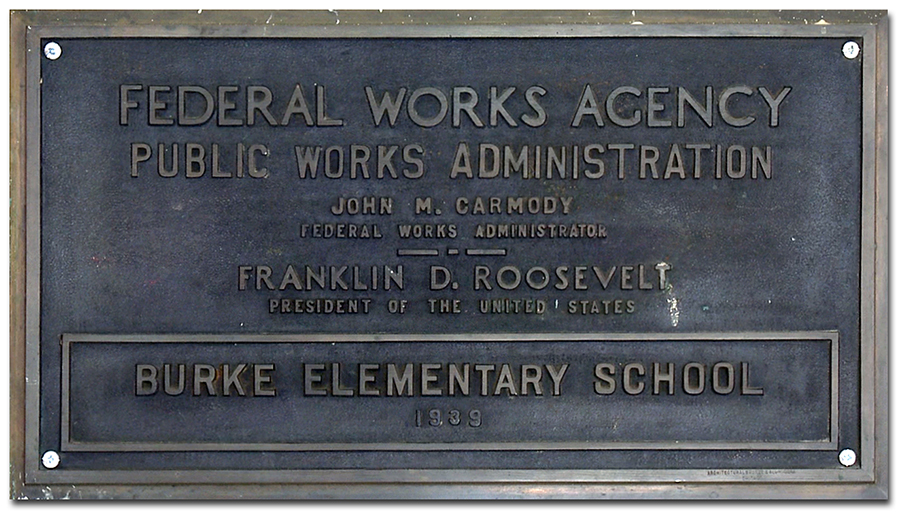
Burke’s Early Years
During its first year, Burke had 103 students in grades 1-7. The school had a radio, record player, piano, typewriter, a printing machine, and 810 books in the library. In the classrooms, the daily schedule was written on the chalkboard. Students began the day with recitations of the “Pledge of Allegiance” and “The Lord’s Prayer.” They also read from the Bible and sang. The classroom teacher taught reading, writing, arithmetic, science, grammar, geography, history, art, music, and physical education. There were two ten-minute recess periods, one in the morning and one in the afternoon, for exercise or games.
Children brought bag lunches and purchased a pint of milk for two cents. Principal Messick made soup on a two-burner hot plate and offered it to the students without charge. School supplies and candy were sold from the principal’s office by sixth and seventh graders. Discipline measures included standing in the corner or in the coat room. Boys sometimes had to hold a heavy book over their heads for a length of time. Occasionally, a student was struck on the hands or shaken by the shoulders. Parents were notified when students misbehaved in school or on the bus and were informed of what punishment had been given.
Parties, celebrations, and special programs were held on Columbus Day, Halloween, Thanksgiving, Christmas, Valentine’s Day, Easter, and on the birthdays of George Washington, Abraham Lincoln, and Robert E. Lee. In the spring, field days were held, complete with relay races and ball games, and parents brought picnic lunches. Children’s birthday parties were celebrated in the classroom with games, favors, and cakes.
Burke Elementary School was the center of the community. Annual events included dances, dinners, and plays sponsored by the Parent-Teacher Association (PTA), and ham and oyster dinners and minstrel shows sponsored by the Burke fire department.
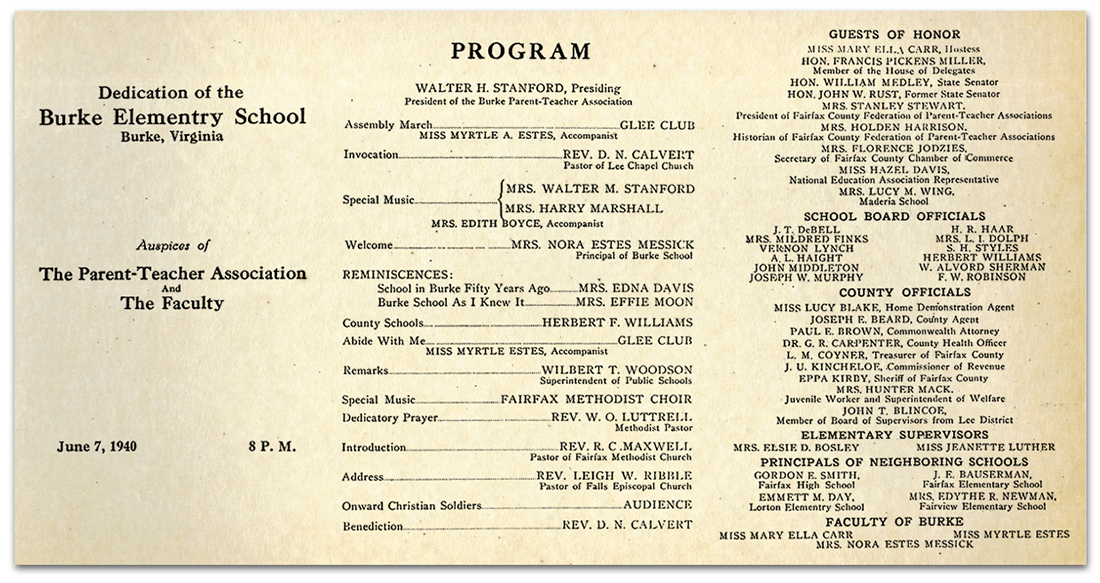
Burke in the 1940s
In 1942, Mrs. Messick was succeeded as principal by her sister, Myrtle Estes, whom the students called “Miss Myrtle.” She served as principal and teacher until 1953. The war years were a difficult time for many Burke families. Leather was needed for combat boots, so during warm weather boys often went to school barefoot. Doctors and medical supplies were also needed for the war effort, so, to keep first and second graders healthy, cod liver oil was spooned-out during the winter months.
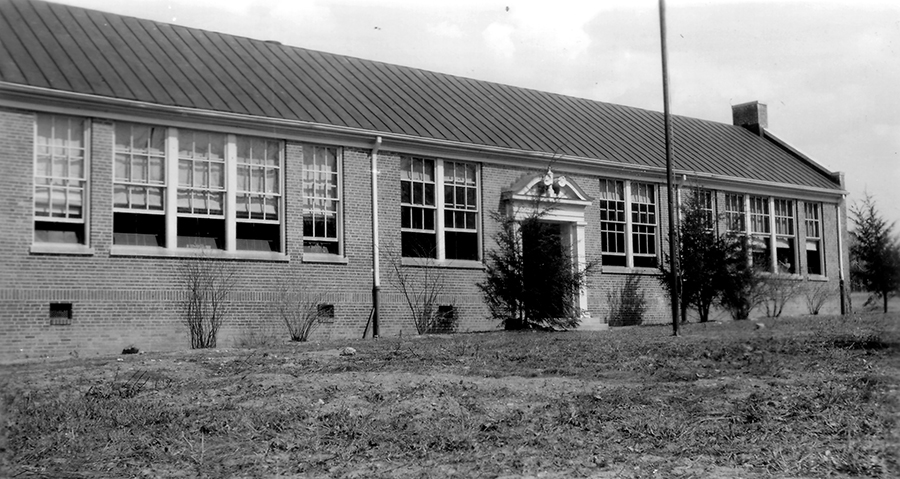
The end of World War II brought an increased enrollment at Burke. Principal Estes taught class half-day, and received clerical help from Mrs. Monroe, the school’s first secretary. Students continued to gather in the auditorium each morning to sing while Miss Estes accompanied them at the piano. A band program was added for students in grades 4-6, with Philip Fuller as director. On the playground, organized sports such as baseball and dodgeball were played, and recess afforded children an opportunity to swing, see-saw, jump rope, and play “Tag,” “Duck-Duck-Goose,” and “Drop the Hankie.”
After the war, students began taking annual field trips to the zoo in Washington, D.C. Annual luncheons were held with hot dogs and grape punch. This was a novelty for most of Burke’s students because meals at home usually consisted of fruits and vegetables grown on the family farm. In 1946, the first-grade class held a square dance. The girls wore sunbonnets and long skirts and the boys donned cowboy shirts.
Parents were very active in the education of the children at Burke in the 1940s. “Room Mothers” helped with parties and social events, chaperoned field trips, and helped with the weighing and measuring of students on the first day of school. The PTA also sponsored low-cost Saturday afternoon movies for children at the school.
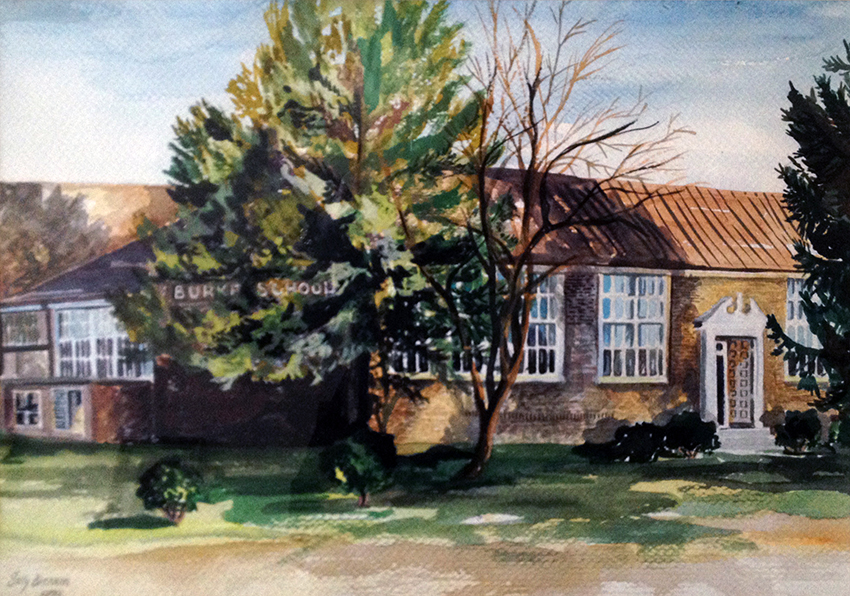
The Baby Boom Begins
By 1950, enrollment at Burke Elementary School had risen to nearly 200 students and the school was very overcrowded. In August, the School Board purchased more land from William J. Simpson to increase the school property to ten acres in size.
In June 1951, area residents learned that 4,520 acres south of the village of Burke, including the Burke School property, had been proposed by the federal government as the site for an international airport. When the airport plans were made public, construction was already underway on a three-classroom and library addition to Burke Elementary. The School Board directed the contractor, Eugene Simpson & Brother, to cease work immediately.
The airport plan was fiercely opposed by area residents, who, for seven years, lobbied against it through the press, at town hall meetings, and by repeatedly voicing their concerns to local, state, and national politicians. Ultimately, an alternative airport site in western Fairfax and eastern Loudoun counties was approved by Congress and President Eisenhower. The new airport was named for Alan W. Dulles.
In December 1951, the School Board directed the contractor to resume work on the addition to Burke Elementary School. Because additional funding had become available, the contractor was advised that the board wanted to go beyond the scope of the original contract to add two more classrooms and a cafeteria. The total cost of the addition was revised to $229,473.
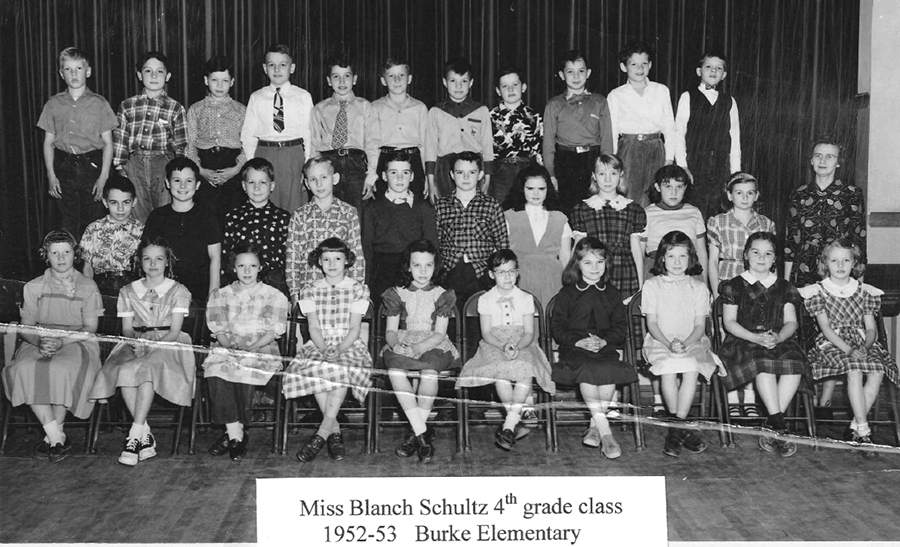
In 1953, William B. Martin became principal of Burke Elementary School. During Martin’s first year, the addition was completed, and the parking lot was enlarged and covered with blue stone. The School Board left it to Burke’s PTA to furnish the cafeteria and kitchen with cookware and utensils. The PTA sold hot dogs and potato chips once a week to raise money for pots and pans. Elsie Sisson was hired as a dietician to run the cafeteria and administer a hot lunch program. The PTA also raised funds for galvanized pipe, which several fathers welded together to make a jungle gym.
Burke School News – We have moved into our new addition and opened the cafeteria. The hot lunches served are very good. The painters are painting our old building. They have finished the auditorium and it looks new. Our library is being operated by some of the parents. We are glad to have the opportunity to take books out to read. The square dance given by the Room Mothers was very successful. The money raised will go to buy things to make our rooms more attractive. ~ The Fairfax Herald, April 24, 1953
Also in 1953, Burke’s seventh graders raised funds for a trip to Williamsburg, Virginia, by selling Krispy Kreme doughnuts. The students stayed in Williamsburg for two nights and had fried chicken dinners and watched a movie. The total cost of the trip was $3.00 per student. Summer recreation programs started at Burke in 1953, with greased pig races and pie eating contests.
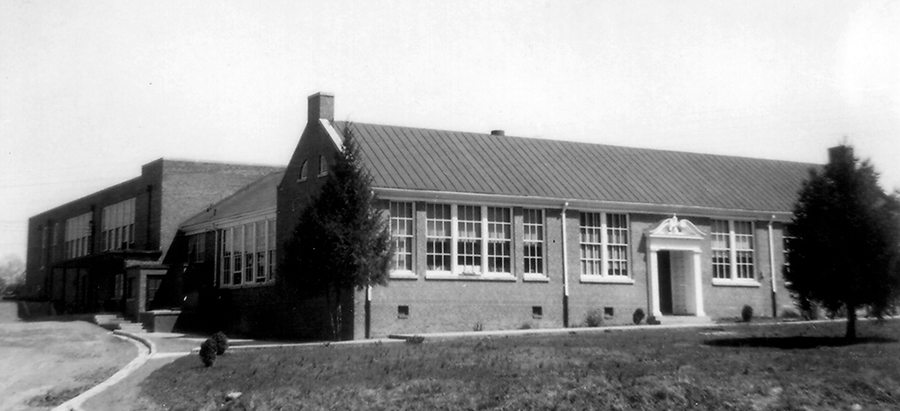
Winters were particularly severe during the mid-1950s, and when roads were bad Principal Martin rode the school bus to help if it got stuck. He often arrived at school at 6:00 a.m. to stoke the coal furnace and warm the building before the arrival of students. Mr. Martin is remembered as an innovative educator. He initiated a learning identification program at Burke. Students who were identified as having a learning disability received individualized help in class and extra instruction after school. Martin’s program became the model for the Learning Disability Resource Program later adopted throughout Fairfax County Public Schools (FCPS).
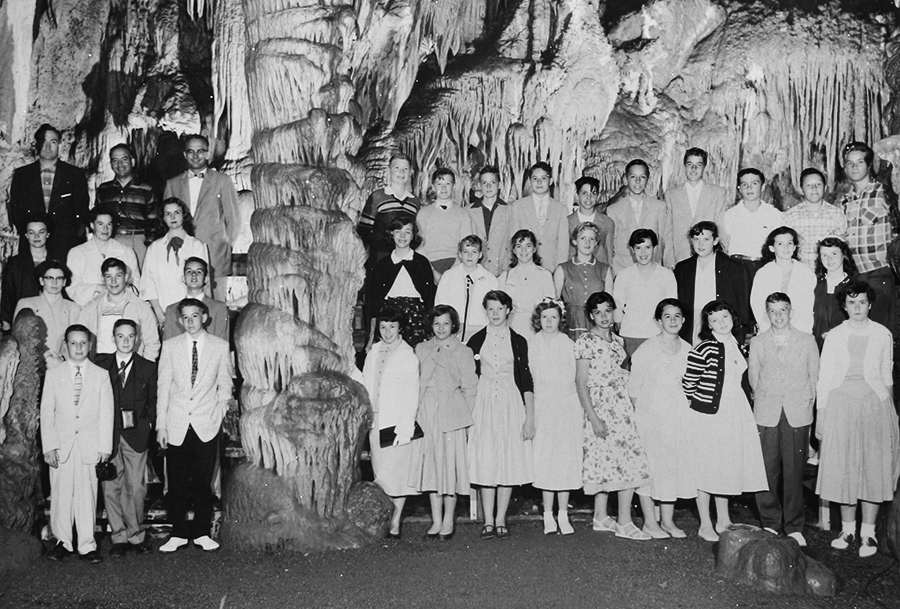
Growth and Change
In the fall of 1958, Zetta B. Hamby was appointed principal of Burke and the school had an enrollment of 310 students. 1958 was also the year the airport plan for Burke was finally abandoned. The federal government began selling off the land it had acquired for the airport, and many new families settled in the area. The membership in Burke’s PTA increased, and fundraisers were held to purchase record players, records, library books, a television, musical instruments, and draperies for the stage.
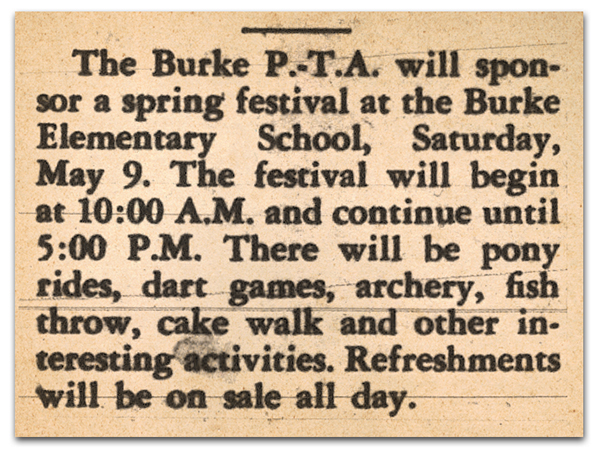
In the fall of 1960, FCPS opened its first intermediate schools, and the racial desegregation of the public schools began. The desegregation process was completed in 1966 with the closing of the county’s last all-Black elementary schools. Originally an all-white school, Burke Elementary School began admitting Black children in September 1965. The students assigned to Burke had formerly been enrolled at Eleven Oaks Elementary School.
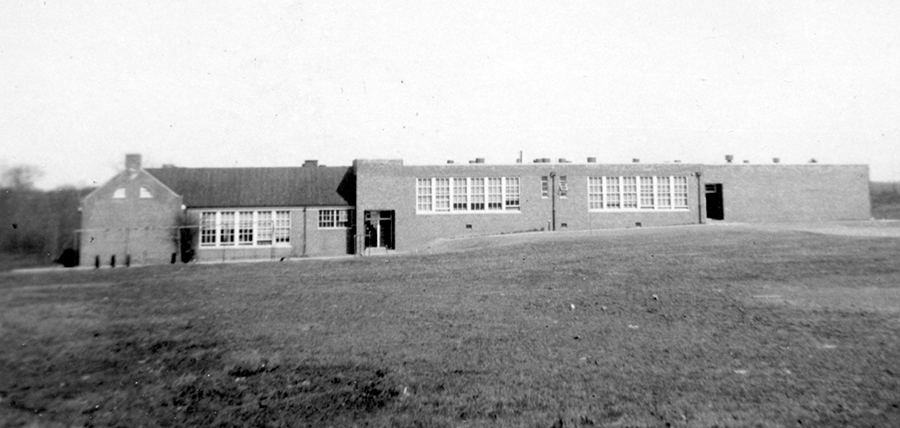
1964 was an eventful year at Burke Elementary School. In May, construction began on a $144,512 addition to increase the size of the building to 14 classrooms. The addition was completed in record time and was ready for use in September. In the fall, Burke was one of three pilot sites for the Project Head Start program. The program was expanded the following year to 26 schools in Fairfax County. 1964 is also remembered as the year of the “Oil Slick.” In December, a contractor mistakenly pumped 3,000 gallons of fuel oil into Burke Elementary School’s septic tank. The oil poured out of faucets and toilets and ran down the front hallway. FCPS sent in a team to clean and repair the school, but the oil stains remained visible in the hallway for many years.
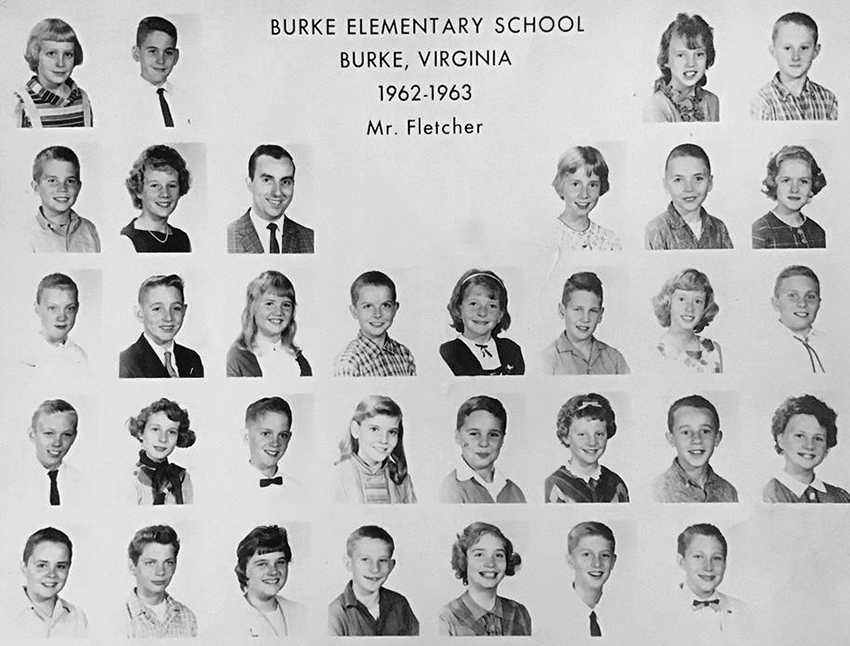
In 1965, Barbara Fry was named principal of Burke Elementary School. Beginning in 1966, Burke’s Student Cooperative Association held tea-dances for fifth and sixth graders. From 1967 to 1969, Burke participated in the federally-funded “Stepped-Up Language Arts” program. The purpose of the program was to expose children in grades 1-3 who lived in rural communities to new experiences to improve their development. The children were taken on field trips to George Washington’s Mount Vernon estate, the Smithsonian Institution, Oxon Hill Farm in Maryland, and other places of cultural interest.
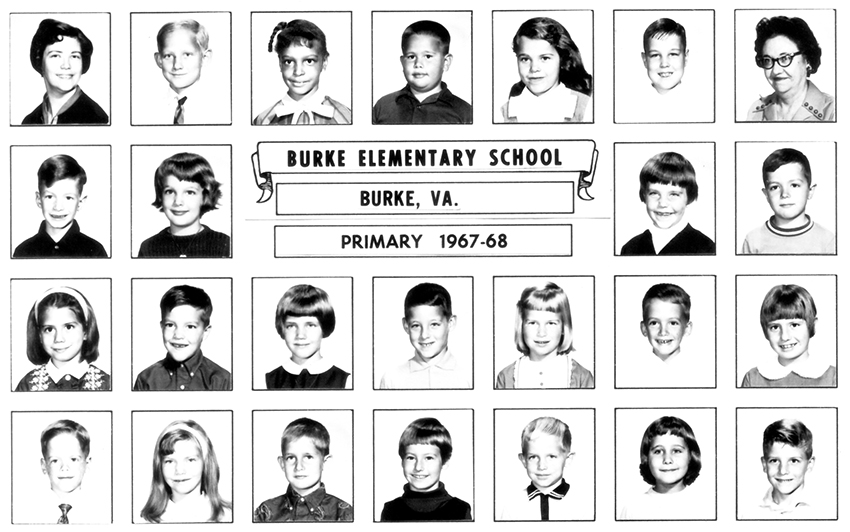
Burke Elementary School was one of the pilot sites for FCPS’ kindergarten program. In September 1968, kindergarten was adopted at elementary schools county-wide and Hunt Valley Elementary School opened. Barbara Fry was named principal of both Burke and Hunt Valley simultaneously, and Marjorie Singleton was promoted to assistant principal at Burke. With the opening of Hunt Valley, the kitchen at Burke was closed and meals were prepared at Hunt Valley and brought over daily. Also in 1968, Burke entered the Green Pennant Safety program and expanded the physical education program to include basketball and softball. Teams were formed for after-school play.
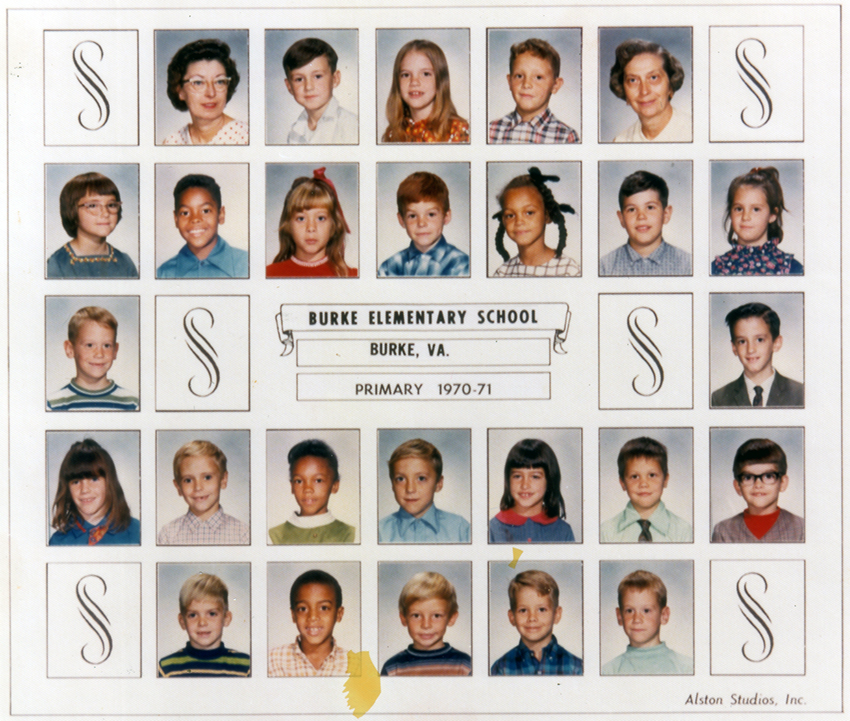
Burke Closes
The 1970s saw the rapid development of the Burke community as new housing subdivisions sprang up across much of the once-rural landscape. Marjorie Singleton was promoted to principal and enrollment, which had dropped after the opening of Hunt Valley, surged once again to more than 300 students. To relieve overcrowding, the kindergarten classes were moved to Hunt Valley and portable Parko trailers were brought in to provide additional classroom space. In 1972, Burke had 12 classroom teachers, five specialty teachers, and 353 students. The increased enrollment put additional strain on Burke’s septic field, which was only capable of supporting 360 children.
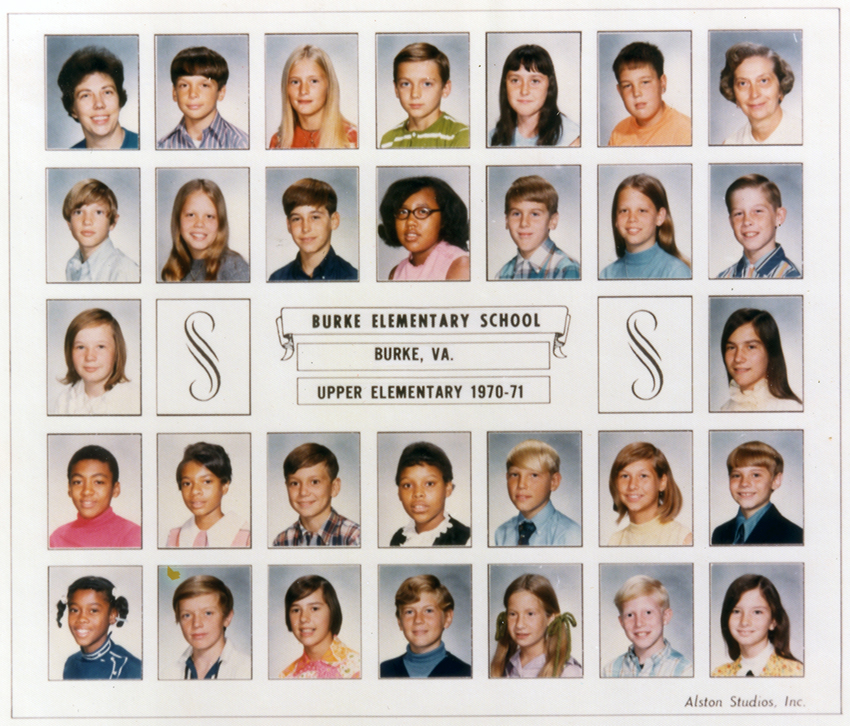
Relief came in September 1974 with the opening of Orange Hunt Elementary School. From 1974 to 1978, Burke continued to operate with grades 1-6. In 1976, the bicentennial of the United States was celebrated at Burke with plays, songs, and activities such as quilt-making. The kitchen at Burke was remodeled into a physical education classroom and a Gifted and Talented (GT) study program was established with 15 students in grades 4-6.
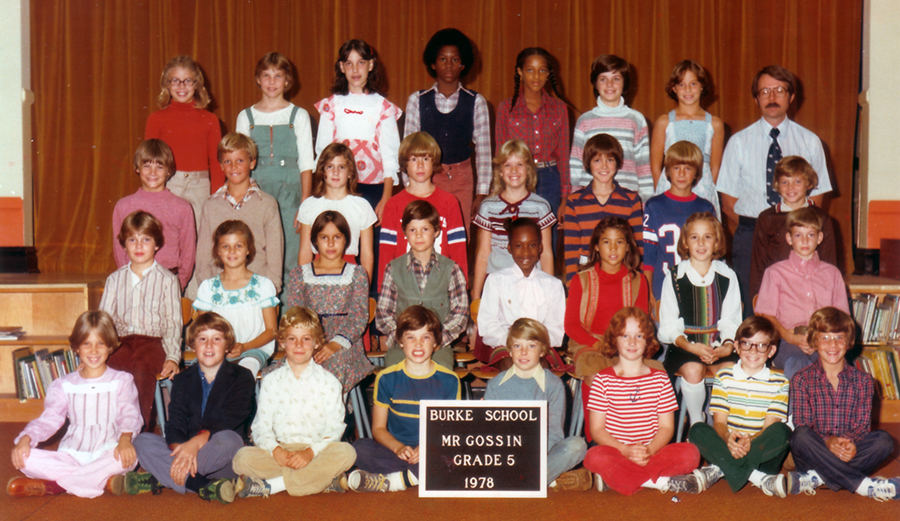
During the 1977-78 school year, Burke Elementary School was connected to the county’s public water and sewer system. Additionally, the school held its first language arts fair. At the fair, students browsed through books written and illustrated by their peers, read those which were of interest, and took books back to the classroom for further sharing and reading. In 1977, the school library held some 6,000 books, 500 records, 450 file strips, 450 study prints, 25 magazine and newspaper subscriptions, and 184 transparencies and tapes.
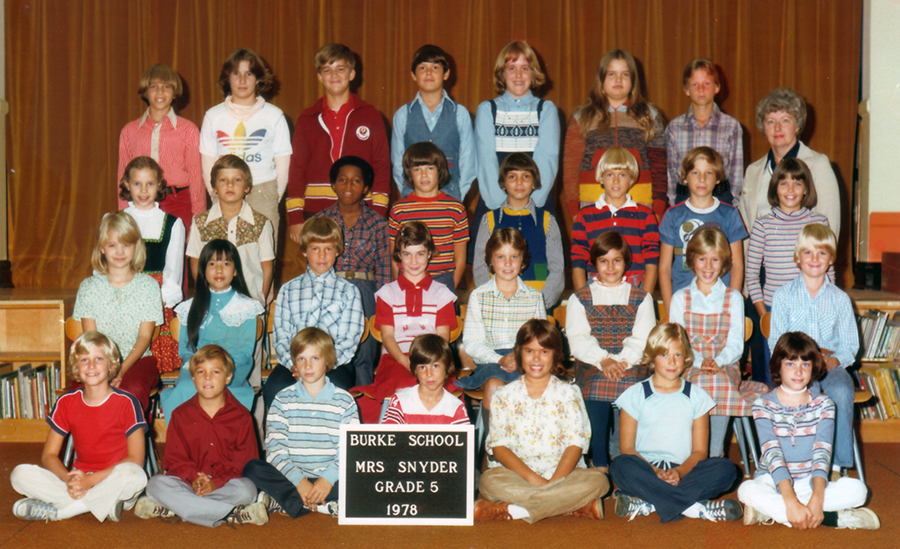
On March 30, 1979, Burke Elementary School celebrated its 40th anniversary. Four months later, Franklin D. Freeman was appointed principal.
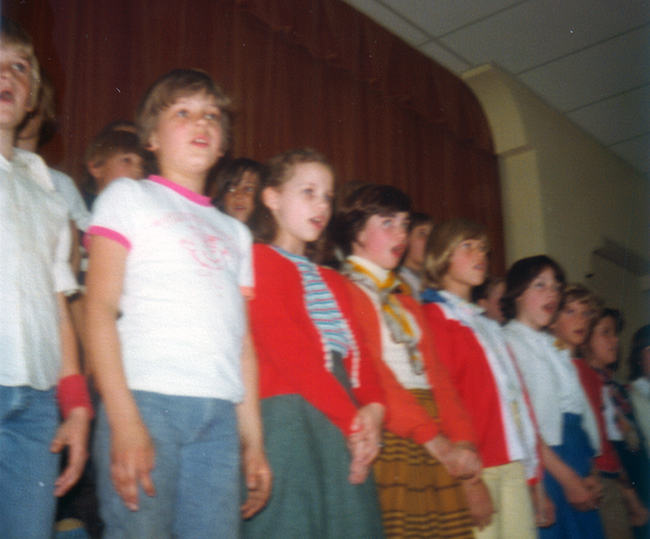
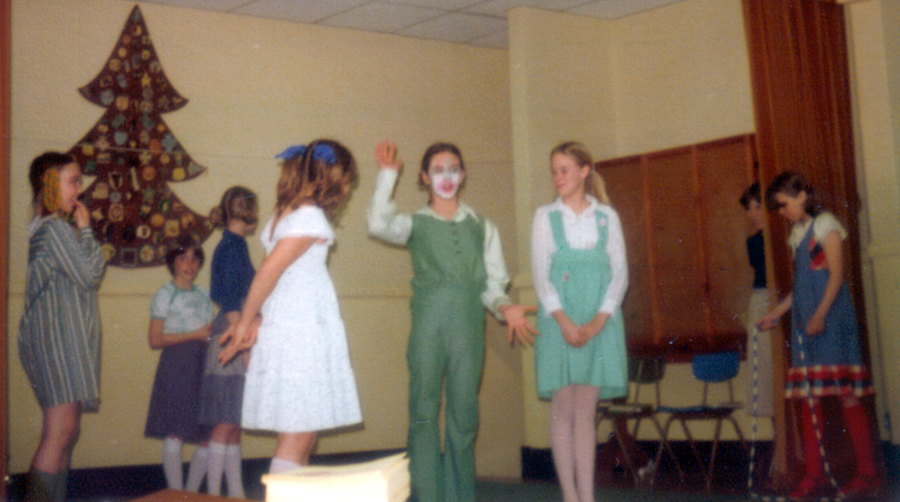
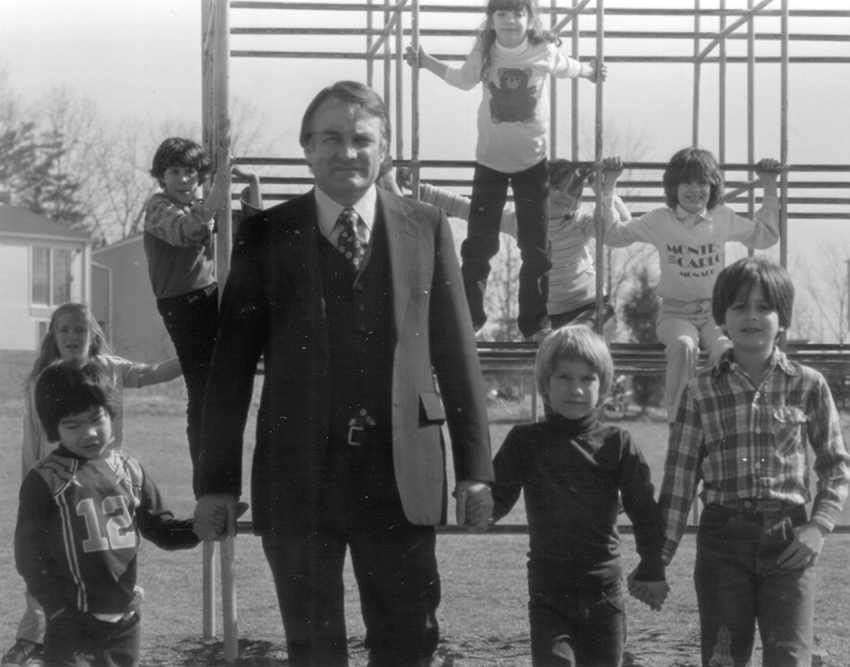
Mr. Freeman became principal at a time when FCPS was in the midst of a programmatic shift at the elementary school-level. Newer facilities were being constructed with gymnasiums and specialized classrooms for art, music, science, and special education. Older facilities were placed in a renovation queue to have such facilities constructed, but Burke Elementary School was deemed too costly to modernize. FCPS leaders decided to phase out Burke and move the students to the new Cherry Run Elementary School which opened on August 29, 1983.
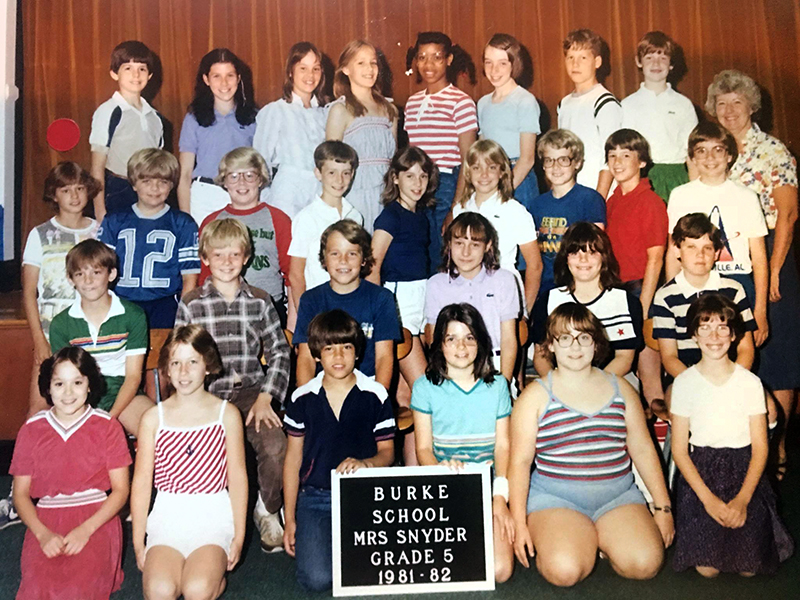
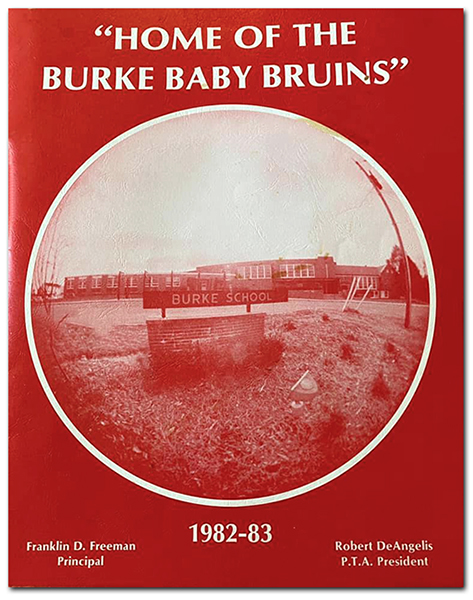
Burke Elementary School was closed as an operating school at the end of the 1983-84 school year, after which it was converted into a special education center. The school continues to serve in this capacity today.